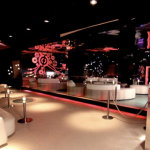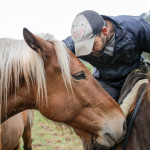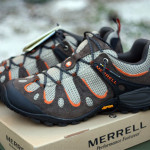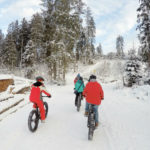The sky was bleak, charcoal grey and the trees were stark without leaves.
The scene was just what you’d expect from the Nazi’s largest extermination centre, Auschwitz II – Birkenau. I stood alongside a railway track trying to focus on where the track ends. The visibility was pretty poor due to the pouring rain, my umbrella was fighting to withstand the cross wind blowing across the Auschwitz Concentration Camp. It’s hard to understand what happened here, in what is one of the bleakest places on earth.
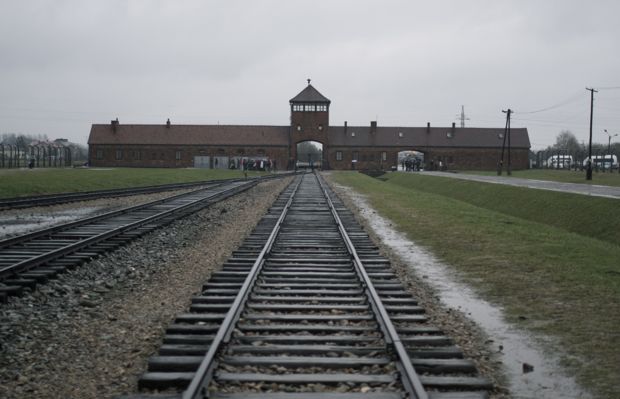
Auschwitz Watchtower, "The Gate of Death"
“The Gate of Death”
Walking under what was known as “The Gate of Death” by prisoners at Auschwitz II and standing under the watchtower, you realise that you’re stood in a haunting and harrowing place. The railway tracks pass under the watchtower and out onto the horizon, it’s difficult if not impossible to visualise where it ends.
It was here around the middle of May 1944 where trains made up of 40-50 cars rolled through the gates day and night, transporting Jews to be gassed at the four gas chambers. Over one million people died here, it was killing on an industrial level.
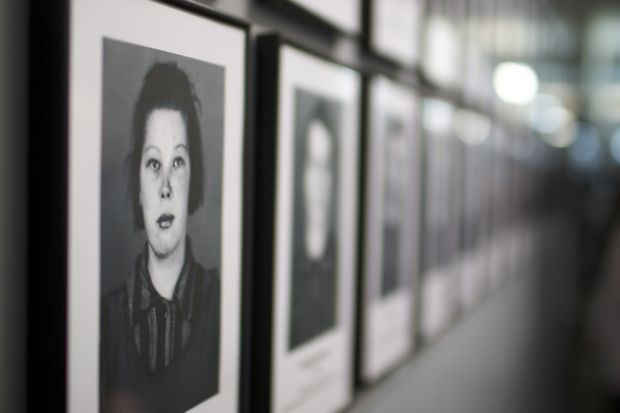
Prisoners of Auschwitz
I trudged along a muddy path following the train tracks and squinting through the rain that was dripping down one side of my face. I was wondering whether turning back was a better option due to limited time but I wanted to make it to the end of what is a symbolic railway line. What at first seemed like a plausible idea suddenly seemed like the wrong decision, the end of the railway track still wasn’t in sight despite walking for some considerable time.
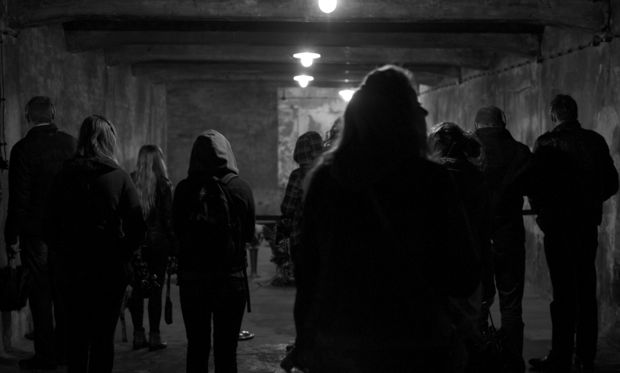
Gas chamber, Auschwitz I
I stopped, looked back towards “The Gate of Death” when the sheer scale of the concentration camp started to dawn on me. The pit of my stomach felt uneasy and couldn’t help but think of images of people’s hair, suitcases and children’s shoes on display in the Auschwitz Museum. “Over a million people”, I repeated back to myself out loud.
Covering a total of 425 acres, stretching a mile in one direction and a half in the other the Birkenau concentration camp is simply huge. It was originally surrounded by electrified barbed wire fencing and contained more than 300 buildings.
Auschwitz Museuem
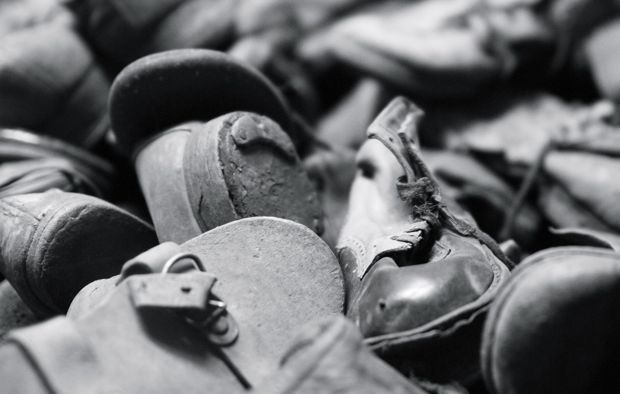
Childs shoe, Auschwitz Museum
Earlier in the day we’d taken a guided tour of the Museum at Auschwitz I where human hair from thousands of people, suitcases, artificial limbs and children’s shoes are exhibited. There’s nothing more haunting then realising you’re in a room staring at the hair of 40,000 people who had been executed. Seeing piles of children’s shoes, varying in shapes and sizes but all equally tiny is something that you can’t help be affected by. I was drawn to one shoe in particular that was sat on top of the pile, laces intact, well-worn but shiny and it was easy to imagine who they once might have belonged to and it’s terrifying.
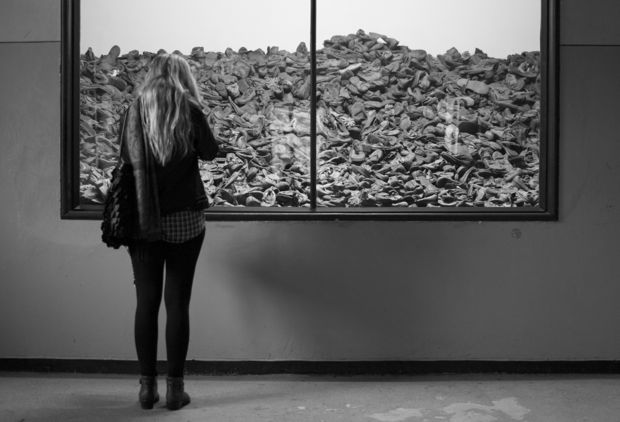
Shoes on display at the Auschwitz Museum
The end of the track
I continued walking not quite knowing how long it would take to reach the end of the line. It’s a railway line where trains roll in and stop, it’s a final destination. To the right and left of me were fences covered in barbed wire and large brick shed type buildings stretching into the distance as far as the eye can see. The scale of what happen at Aschwitz concentration camp is both mind-blowing and shocking.
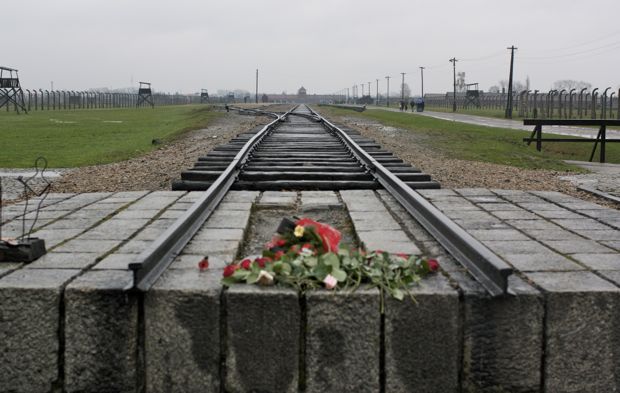
Auschwitz II, end of the railway track
After walking for some time I finally made it to the end of the track and turned to look back down the track towards the watchtower. The sheer scale of Auschwitz II – Birkenau was overwhelming and what happened during World War 2 quite hard to comprehend.
Auschwitz remains an important reminder of the great suffering humans are capable of inflicting upon each other. Visiting is an emotional but important experience, no one should ever forget the indescribable horrors that were carried out here during World War 2.


